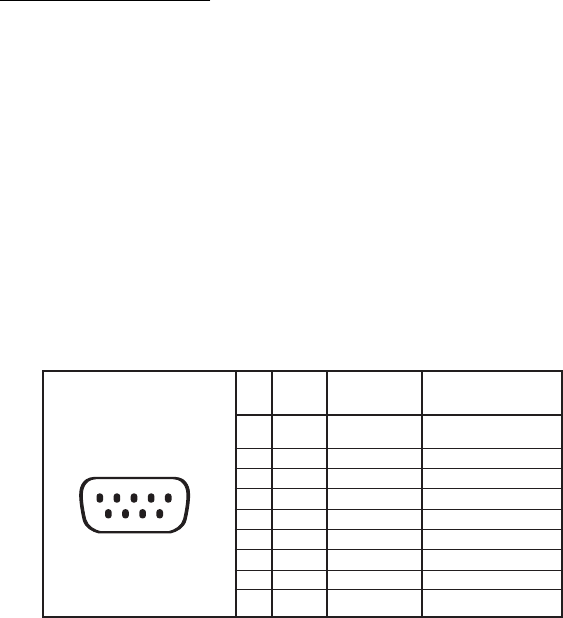
[ 24 ] Pelco Manual C1977M-D (6/02)
Connecting Data Terminals
The unit has two serial interfaces—one at the back and another at the front. They serve different purposes
and cannot be used interchangeably, as explained in the following.
Control Terminal Port
For local control and configuration of the unit, you can connect a data terminal (for example, a PC running
a standard terminal program) to the serial interface labeled Control Terminal on the rear panel. The 9-pin
DSUB connector features a standard RS-232 interface that can be connected to a PC’s COM port.
You can use a standard terminal program to communicate with the unit. The default parameters are set to
19200 baud with 8 bits of data, 1 stop bit and no parity bit (8N1).
To access the online help, type ? (a question mark) in the terminal window. For more information on the
command set, see the
Configuration
section. This mode allows the control port to be used to send serial
data that requires flow control.
You can configure the RS-485 halfduplex mode in the web browser. The RTS and CTS signals are enabled
for flow control.
If this RS-485 mode is chosen, the camera control data is transferred automatically to the Control Terminal
port. Certain cameras with fixed data length require the buffered RS-485 mode. (This halfduplex mode is
not required for interfacing to any Pelco product.)
1 2 3 4 5
6 7 8 9
VIEWED FROM SOLDERING
SIDE OF PLUG
Pin
1
2
3
4
5
6
7
8
9
Name
DCD
RXD
TXD
DTR
GND
DSR
RTS
CTS
-
Direction
Input
Input
Output
Output
Input
Output
Input
-
Description
Data Carrier Detect
Receive Data
Transmit Data
Data Terminal Ready
Ground
Data Set Ready
Ready To Send
Clear To Send
-
Figure 20. Control Terminal Port Pin Assignments in RS-232 Mode


















